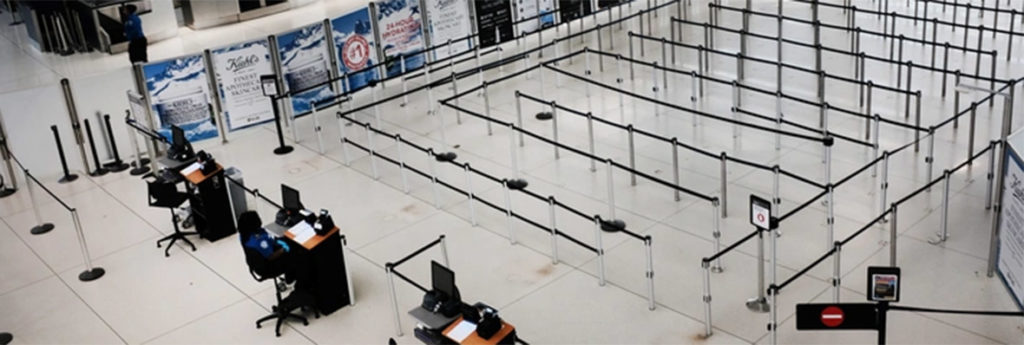Air Canada’s pilot union says up to 600 of its members will go on unpaid leave in the coming months due to the COVID-19 pandemic. The 4,400 pilots have also agreed to reduced pay across the board and “simplified contract language” to allow pilots to retire earlier.
Captain Michael McKay, head of the Air Canada Pilots Association, says the union has agreed to a plan for a maximum of 600 pilots on furlough.
McKay says a “precipitous drop in passenger demand and the challenging operating environment” have prompted the changes.
He is joining other unions in calling on Ottawa for financial relief for the aviation industry.
McKay says that due to the complexity of pilot training, the precise number of positions immediately affected at the country’s largest airline is still unclear.
On Thursday, the union representing Air Canada’s flight attendants said the company will temporarily lay off more than 5,100 members.
WestJet says roughly half of its 14,000 employees will leave the company – some temporarily – due to the COVID-19 pandemic.
The 6,900 departures comprise early retirements, resignations and both voluntary and involuntary leaves after WestJet asked staff to choose one of those options or reduce their hours or pay, said CEO Ed Sims.
The first wave of departures is set for Wednesday and the second for April 1.
The Calgary-based company has cancelled all international flights for 30 days and, like Air Canada, severely scaled back domestic capacity.
The travel industry continues to reel as borders stay closed and planes are parked across the globe.
Sunwing, Transat and Porter are suspending all of their flights.
Global passenger revenues could plummet by $252 billion this year, a 44 per cent drop from 2019, the International Air Transport Association said Tuesday.
Airlines are fighting for survival in every corner of the world,” IATA director general Alexandre de Juniac said. “Travel restrictions and evaporating demand mean that, aside from cargo, there is almost no passenger business. For airlines, it’s apocalypse now.
In a matter of weeks the trade group’s previous worst case scenario – $113 billion forecasted on March 5 – has become much sunnier than its current projection.
“Without immediate government relief measures, there will not be an industry left standing,” de Juniac said, calling for $200 billion in relief.
He cited nine states including Australia, China and Sweden that have pledged aid packages in the form of loans, delayed fee payments and other measures.
Hotels
According to the American Hotel & Lodging Association (AHLA) nearly 50% of all hotel jobs across the country could disappear in a matter of weeks.
“In certain affected markets, including Seattle, San Francisco, Austin and Boston, hotel occupancy rates are already down below 20 percent,” the AHLA said.
“The impact to our industry is already more severe than anything we’ve seen before, including September 11th and the great recession of 2008 combined,” Chip Rogers, AHLA president and CEO said.
AHLA bases it on an expected 30% decline in hotel occupancy rates and says California will be hit hardest with over 125,000 hotel jobs lost and an additional 400,000 indirect jobs impacted.
“The losses for the travel industry alone are projected to double the unemployment rate over the next two months and plunge the country into recession. Small businesses, which make up 83% of travel businesses, need relief right now,” said Roger Dow, president and CEO of the US Travel Association.

